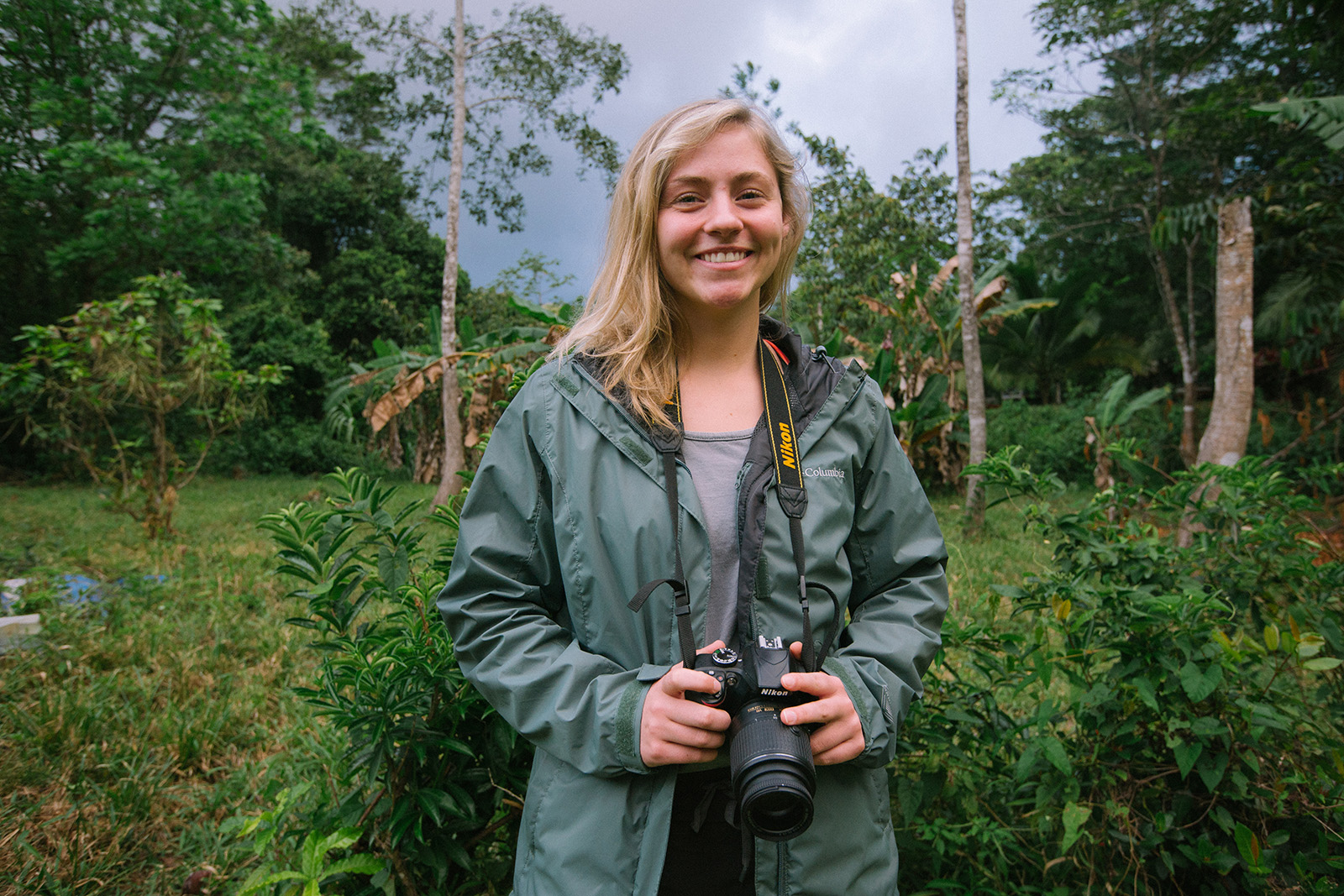
Science and films have been two of my favorite things for as long as I can remember. For me, films can capture the imagination and transport you to a different place and time. Science is similar. It captures the imagination and challenges you to question and investigate the world around you.
It wasn’t until I began working toward a fisheries and wildlife degree at the University of Nebraska-Lincoln did I realize that these two seemingly unrelated fields could be integrated and benefit from one another. I also realized that there seems to be a lack of adequate communication of science to the everyday person. Many people don’t understand, or are intimidated by big science words and ideas, but all people can relate to films and photographs. I realized that photography and film are a great way to bridge the gap between scientists and the everyday person.
When I found out I would be representing SNR at the Women Wildlife Filmmakers Workshop in Panama, I was ecstatic. I would be spending a week in a rainforest on the Cocobolo Nature Reserve learning how to communicate science and conservation goals through filmmaking. I would be learning from two very accomplished conservation filmmakers, Morgan Heim and Jenny Nichols.
One major drawing point of this workshop for me was that it was created only for women. Conservation filmmaking and media communication is lacking in female representation, so Morgan and Jenny created this workshop to help change that. The objective of this course then was to not only instruct us how to create impactful conservation films, but to inspire more women to enter the field of conservation media communication by creating a community that pushes for more stories told by women.
The task given to the six of us was to create a film about any conservation topic we wanted that we had access to in four days in the rainforest. We were paired up, so there were three teams assigned this task. First, we had to learn about our potential subject, the rainforest. We explored the rainforest and talked to the experts staying there to learn about the different stories that could be told. And although each group was given the same objective to create a conservation film, we each took it in drastically different directions.
My partner and I decided that we wanted to approach the film with humor. Many conservation documentaries are filled with despair and poor outlooks on our current environmental state. We wanted to create a film that was informational, but didn’t leave our audience discouraged. We decided to create a mockumentary, a satirical documentary, about two filmmakers on a quest to find an endangered species. In four days, we brainstormed, created a script, shot the scenes, interviewed people, and edited our film. By the end, our film was not the exact project we first thought of, but it evolved and changed. Learning to be okay with allowing your project and story to change was important to me. It shows that our environment is an ever-changing place and the stories we chose to tell about it might change also.
On the last night at the reserve, Morgan and Jenny hosted a film festival for us. We watched the short films we had created earlier that week and our completed films premiere on a big screen in the middle of a rainforest. It was inspiring to see the finished products, each with a different focus, that were made in four short days. Our film highlighted the importance of protecting endangered species through the use of humor. The other two teams also created great films. One told the story of the nearby river through a poem with beautiful imagery. The other team told the story of the rainforest giving it a voice to tell its own story. All three films were unique with their own styles and stories. When I was watching them, I realized that these great films would never had been made if the women on that trip weren’t given the opportunity to sit behind the camera and direct the story.
My participation in the Women Wildlife Filmmaking Workshop had and will continue to have a profound impact on the way I approach my scientific research. It taught me that using media as a scientist is imperative if we want people to understand our work. It also taught me that there is no one “right” way to present science in media. You can tell it through film or photography, through stories that are funny or serious.
This workshop also showed me that women need to be given the opportunities to be behind the camera in conservation media communication. In four short days, I watched six women, including myself, create impactful and creative films. They each had their own style relating important conservation stories, but through a woman’s perspective. I am thankful I had this opportunity to learn from independent, intelligent, strong women who inspire me to tell important conservation stories and for reminding me that if we want to change this world, we must first tell its story.
View the mockumentary
Bullington's mockumentary is available for viewing on YouTube. View it here.
Grace Bullington, SNR alumni